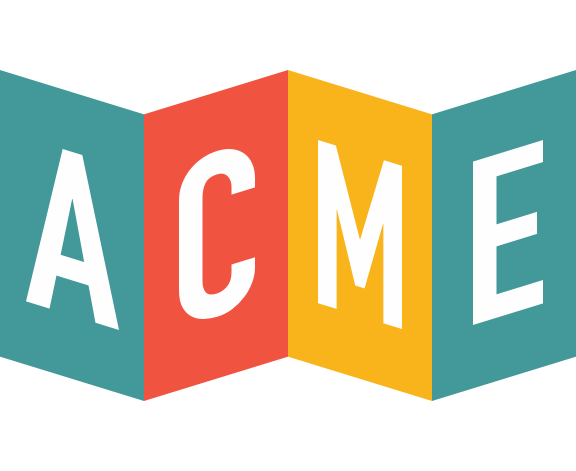
Guide to Nonprofit Email Marketing
The advent of email revolutionized marketing possibilities for the world or nonprofit organizations. 50 odd years down the line, it continues to be one of the most popular forms of communication, and the easiest, most efficient way to reach out to clients and supporters.
But form many, email has begun to look like a physical mailbox overstuffed with junk letters and bills. Between spam, excessive daily newsletter feeds, and now COVID-19 forcing every organization and their benefactor to communicate almost exclusively through virtual means, the clogged inboxes of your supporters can make it difficult for your nonprofit to get its message across.
If done right, however, the email marketing campaign can be your secret weapon. A strong nonprofit outreach strategy will enable your organization to avoid getting dumped into spam folders, and reach a wide and passionate audience.
In the following article, we’ll go over solid actions you can take to make your nonprofit marketing emails their most visible and effective.
Best Practices for Nonprofit Email Marketing
Building an Audience
No matter how well-written your email, or how worthy your cause, your brilliant marketing campaign will disappear into the ether without a reader at the other end. An engaged audience is truly the lifeblood of any nonprofit organization, and it’s your job first and foremost to construct a solid foundation of supporters.
You might cast a wide net and see what you come up with — a valid action especially for greener organizations — but a better strategy for attracting interested members who are invested in your cause is targeted outreach and incentivized subscription. Think about who your ideal audience is: are they environmentalists? Small business owners? Animal lovers? What specific gift might you be able to offer them in exchange for their subscription to your newsletter?
Staying Ethical
Are you up-to-date on the spam laws in your country? The CAN-SPAM Act in the US lays out specific legal guidelines which commercial businesses and nonprofits alike must follow when sending marketing material through email, as well as other forms of communication.
The basics are:
– Do not use misleading headers. Routing information, who from, etc. must all be true and verifiable.
– Do not use deceptive subject lines. Subject headers must accurately reflect the actual content of your email.
– The message must be identified as advertising material. No one should think your marketing campaign is a special call just for them.
– Tell subscribers where you are. All communications must include a valid postal address.
– Tell subscribers how to unsubscribe. The opt-out button should be accessible and easy to navigate.
– Honor opt-outs promptly. If an audience member is done, let them go.
– Monitor the work being done for you. If you’re outsourcing your marketing material, it is still your responsibility to make sure that everything coming out is compliant with the CAN-SPAM Act.
It seems like a lot to keep track of, but ethical subscription practices are the best way to ensure that your emails stay out of the junk folder.
Remaining Visible
Your email campaign should shine like a diamond, not stick out like a sore thumb. Too few or too generic messages run the risk of being skimmed and then deleted; too many can become white noise in an inbox and are easily ignored.
You want your audience to look forward to your next communication, and the easiest way to do this is to allow a little breathing room around each message. If subscribers feel they are receiving too much from you, they might mark your messages as spam. Specialists say the ideal number to aim for is around 1 a week, or 52 – 59 emails per year.
Once it’s in their inbox, a header that fits seamlessly in with messages from friends and co-workers is most likely to be opened and read. Casual (but truthful!) subject lines sent from real people at your organization are sure to pique your subscriber’s interest.
Taking it Slow
A nonprofit that asks for too much, too soon can feel like an overly-enthusiastic new acquaintance to new subscribers. Building a beneficial relationship with your audience must be treated like a new interpersonal relationship: you wouldn’t ask someone to move in with you after a first date, so why would you ask a brand-new subscriber to purchase gold-status membership after the first email?
The first communication that new subscribers should receive is a warm welcome that provides a little more information about your organization, and what they should expect from your communications, as well as other ways they might want to get involved.
Follow-ups might include bios of key staff members, other organizations you love, opportunities to support your cause. Allow your audience members to get to know you. The process should be organic, and enjoyable for the audience.
Sending the Right Content
The emails that you send are as strategic as how you send them, and to whom you send them. Most communications in your campaign will be goal-oriented, and an attempt to drive your audience towards a specific end. Typically, your emails will aim to educate, appeal, activate, or express gratitude.
- Educational messages come in the form of newsletters and general updates. They are largely informational, with few or no requests made of the audience. These will let your audience know the latest news at your organization, relevant world events, peripheral causes, and other sources to investigate.
- Appeal messages are specific requests for support, whether financial or voluntary. There might be an event, cause, or other item of concern to your organization to which you will turn to your audience for help. Messages like these will begin with a brief history of the item in question, any relevant bios or sources, and finish with an appeal for support.
- Action messages ask your audience members to do something while also teaching them how to do it. If there is a march happening next week, this email might ask audience members to attend, and then provide guidelines to basic street safety and protest strategies. If there is a national campaign for gender equity in the workplace, your message might provide information about the movement, how your organization is participating, and how audiences can be campaigners themselves.
- Gratitude messages are exactly what they sound like — an opportunity for you to let your audience members know that you appreciate their support. These can be general, a statement of gratitude for their support over the past year, or specific — maybe your organization had particular success with a recent action, thanks to your members. Always remember to let your audience know you are thankful for their support.
Final Thoughts: Guide to Nonprofit Email Marketing
Nonprofit email marketing is the best way to reach a wide audience of passionate supporters — but it has to be done right. Reference this article the next time you need to boost your virtual presence and complete a successful campaign.

